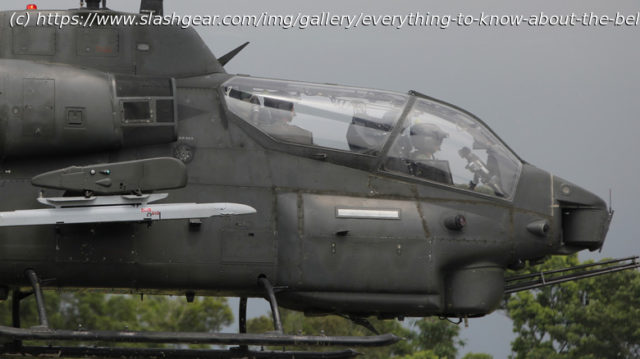The Bell AH-1 SuperCobra helicopter will forever go down in history for its influence on modern attack helicopters that the U.S. military uses today.
The fighter jet has been constantly transforming and advancing since the very first aircraft of its type, the Messerschmitt Me 262, but it took a bit longer for a true attack helicopter to arrive. In that arena, the Bell AH-1W SuperCobra would be a powerhouse in the U.S. arsenal for decades, and it was used by the Marine Corps.
The Bell AH-1’s journey from Cobra to SuperCobra began with the limitations of the UH-1 Huey, an iconic helicopter that, while used a lot in Vietnam, wasn’t really up to the new task as an attack option. Bell Helicopters’ Mike Folse is quoted by Smithsonian Magazine as remembering that, during the conflict, the Hueys « could barely keep up with the troop transports they were supposed to protect. » A less-than-auspicious start. What was plainly needed by the US military, then, was a helicopter with two crucial qualities: Speed and power.
This way of thinking quickly led from the humble Huey to the formidable AH-1, which would, in turn, give way to the very sophisticated AH-1W, or SuperCobra. Here’s a closer look at Huey’s shortcomings, the resultant rise of the Cobra and SuperCobra, and the latter’s capacities and legacy.How did the original Bell AH-1 Cobra come about?
Helicopters, with their unique maneuverability, have a lot of military utility as transport vehicles. The Bell UH-1 Iroquois, or Huey, was used in this capacity by the United States in the Vietnam War, but inevitably, its value and largely defenseless nature combined to make it a premium target. In an effort to somewhat circumvent this, the Huey did boast machine guns, but rather than being designed for combat first, they were really more of a last resort manner of warding foes away.
More supportive aircraft required better protection in order to be able to do their vital work in relative safety. A call for an Advanced Aerial Fire Support System was issued to address this, seeking an attack helicopter capable of reaching up to 250 mph.






